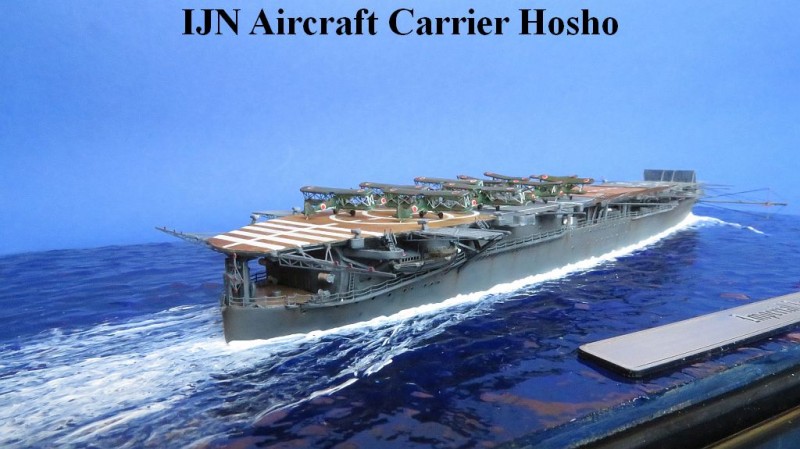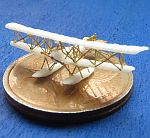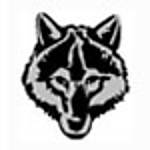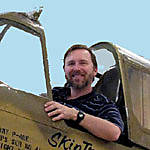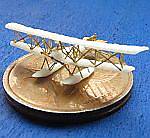You are viewing the archived version of the site.
Go to modelshipwrights.com for the current dynamic site!
Go to modelshipwrights.com for the current dynamic site!
1⁄700IJN Hosho
3
Comments
To increase my personal carrier fleet, here is the perhaps not well know but most important IJN Hosho.
She was the first but also the last carrier of the Japanese who was on duty.
The Hosho was the first aircraft carrier who was designed as carrier and was put into the service. The HMS Hermes was launched earlier but was commised later. The launching was on 13 November 1921 and the commission on 27 December 1922 The appearance of the Hosho was at that time slightly different. On starboard she had an island and the three chimneys were foldable. The Hosho served initially to collect experience with airplanes and their use on the carrier. The length of the Hosho was 168.5 m and the width of 17.98 m. As armament the Hosho had 4 pieces of 140 mm cannons and two 8 cm AA guns. The aircraft capacity was 15 aircraft, but it was reduced with the time. Initially there where nine Mitsubishi 1MF fighters and three to six Mitsubishi B1M3 torpedo bomber aboard. After three years, these were replaced by Nakajima 2N fighters and Mitsubishi B2M torpedo bomber . In 1938 there came Nakajima A4N fighters and Yokosuka B3Y bomber on board. These are also the aircrafts on my model. In 1940, the squadron was renewed by Mitsubishi A5M "Claude" fighters and Yokosuka B4Y1 "Jean" bomber.
1924 first rebuilding took place already. The island was removed and the antiaircraft guns where moved to the front to don't interfere with the landings. On the Hosho there where different devices tested as optical landing aids and arresting gear . The first Operation had the Hosho 1932 together with the Kaga in Shanghai. From there, the planes of Hosho undertook several missions against the Chinese. During a maneuver in 1935 the Fourth Fleet came into a heavily typhoon. The Hosho was there severely damaged. A portion of the flight deck brake away. Based on that experience another conversion took place and the stability of the ship has been strengthened. The chimneys were now fixed in the horizontal position . The flight deck and the supports there of where reinforced as well as the front bridge. The 8 cm AA guns were removed, the Hosho received six 13 mm twin AA guns. With the beginning of the Sino-Japanese War in 1937 Hosho was again send to China. On 17 October 1937, not long after the Hosho already handed their aircraft to the Ryujo and returned to Japan. In 1939, a further conversion followed where the front plane elevator was enlarged.
With the start of World War II and the growth of the aircraft the end of the service period of the Hosho was near. The standard aircraft the Mitsubishi A6M Zero, the Aichi D3A "Val", or the Nakajima B5N "Kate" could no longer operate from the flight deck. She was nevertheless used in patrols and also took part in the Battle of Midway. Thereafter, the Hosho was only used as a training ship. In 1944, the flight deck was increased so the new bomber Nakajima B6N "Jill" could take off and land. The 140 mm cannons were removed and several 25 mm AA guns where mounted. However, as a training ship Hosho mostly stayed near land. After the war, the Hosho was used as a troop transporter to bring back Japanese soldiers to Japan. Thus, the Hosho was in fact the last IJN carrier in service.
The model is from Fujimi and there are practically three identical kits of the Hosho available. On is the 1939 version with the increased elevator. Then the 1942 Midway version with "Claude" and "Jean" aircraft and finally the 1944 version where the larger flight deck included as pe part. This was the version I wanted first to build, but one of the pe parts was unusable because it wasn't etched correctly. However, since the basic kit is identical in all 3 model kits, I switched to the 1939 version. I bought the separate available etching part from Fujimi and because I lacked the flight deck markings I also bought the dry decals from Fujimi. Since Fujimi is always sparse with the aircraft, it is practical that there is also a separate set available with each six Nakajima A4N fighters and Yokosuka B3Y bombers. The fact that there are only 10 planes on the deck, is because that these are in a nonsensical manner molded from clear material and I broke two aircraft. The two "Jill" bombers from the 1944 kit will probably find another flight deck. For my build I also used pe parts from Flyhawk for the two aft boats, the 13 mm twin guns and the aircraft. Otherwise the etching parts from Fujimi contains all necessary parts.
The construction went very smoothly and the fit was very good. As usually the deck clacked into the hull easily. That makes the painting of course very easy. The model is painted with Tamiya Kure Arsenal gray. The details are painted with Vallejo's, as well as the aircraft. The water is the well known Pacific Water Effect of Vallejo. The wave foams are modeled with Vallejo's Foam & Snow.
Model Shipwrights would like to thank Christian Hoeltge for providing photos of his IJN Hosho
The Hosho was the first aircraft carrier who was designed as carrier and was put into the service. The HMS Hermes was launched earlier but was commised later. The launching was on 13 November 1921 and the commission on 27 December 1922 The appearance of the Hosho was at that time slightly different. On starboard she had an island and the three chimneys were foldable. The Hosho served initially to collect experience with airplanes and their use on the carrier. The length of the Hosho was 168.5 m and the width of 17.98 m. As armament the Hosho had 4 pieces of 140 mm cannons and two 8 cm AA guns. The aircraft capacity was 15 aircraft, but it was reduced with the time. Initially there where nine Mitsubishi 1MF fighters and three to six Mitsubishi B1M3 torpedo bomber aboard. After three years, these were replaced by Nakajima 2N fighters and Mitsubishi B2M torpedo bomber . In 1938 there came Nakajima A4N fighters and Yokosuka B3Y bomber on board. These are also the aircrafts on my model. In 1940, the squadron was renewed by Mitsubishi A5M "Claude" fighters and Yokosuka B4Y1 "Jean" bomber.
1924 first rebuilding took place already. The island was removed and the antiaircraft guns where moved to the front to don't interfere with the landings. On the Hosho there where different devices tested as optical landing aids and arresting gear . The first Operation had the Hosho 1932 together with the Kaga in Shanghai. From there, the planes of Hosho undertook several missions against the Chinese. During a maneuver in 1935 the Fourth Fleet came into a heavily typhoon. The Hosho was there severely damaged. A portion of the flight deck brake away. Based on that experience another conversion took place and the stability of the ship has been strengthened. The chimneys were now fixed in the horizontal position . The flight deck and the supports there of where reinforced as well as the front bridge. The 8 cm AA guns were removed, the Hosho received six 13 mm twin AA guns. With the beginning of the Sino-Japanese War in 1937 Hosho was again send to China. On 17 October 1937, not long after the Hosho already handed their aircraft to the Ryujo and returned to Japan. In 1939, a further conversion followed where the front plane elevator was enlarged.
With the start of World War II and the growth of the aircraft the end of the service period of the Hosho was near. The standard aircraft the Mitsubishi A6M Zero, the Aichi D3A "Val", or the Nakajima B5N "Kate" could no longer operate from the flight deck. She was nevertheless used in patrols and also took part in the Battle of Midway. Thereafter, the Hosho was only used as a training ship. In 1944, the flight deck was increased so the new bomber Nakajima B6N "Jill" could take off and land. The 140 mm cannons were removed and several 25 mm AA guns where mounted. However, as a training ship Hosho mostly stayed near land. After the war, the Hosho was used as a troop transporter to bring back Japanese soldiers to Japan. Thus, the Hosho was in fact the last IJN carrier in service.
The model is from Fujimi and there are practically three identical kits of the Hosho available. On is the 1939 version with the increased elevator. Then the 1942 Midway version with "Claude" and "Jean" aircraft and finally the 1944 version where the larger flight deck included as pe part. This was the version I wanted first to build, but one of the pe parts was unusable because it wasn't etched correctly. However, since the basic kit is identical in all 3 model kits, I switched to the 1939 version. I bought the separate available etching part from Fujimi and because I lacked the flight deck markings I also bought the dry decals from Fujimi. Since Fujimi is always sparse with the aircraft, it is practical that there is also a separate set available with each six Nakajima A4N fighters and Yokosuka B3Y bombers. The fact that there are only 10 planes on the deck, is because that these are in a nonsensical manner molded from clear material and I broke two aircraft. The two "Jill" bombers from the 1944 kit will probably find another flight deck. For my build I also used pe parts from Flyhawk for the two aft boats, the 13 mm twin guns and the aircraft. Otherwise the etching parts from Fujimi contains all necessary parts.
The construction went very smoothly and the fit was very good. As usually the deck clacked into the hull easily. That makes the painting of course very easy. The model is painted with Tamiya Kure Arsenal gray. The details are painted with Vallejo's, as well as the aircraft. The water is the well known Pacific Water Effect of Vallejo. The wave foams are modeled with Vallejo's Foam & Snow.
Model Shipwrights would like to thank Christian Hoeltge for providing photos of his IJN Hosho
Comments
Very nice work!....really like the subtle weathering approach.
Cheers,
Joe
SEP 17, 2016 - 03:38 AM
Christian; wonderful work! You have made one of my dream models - with pre-war (for the West, at least) biplanes. As much as I enjoy WWII IJN carriers, they are too common. Thank you for building this one.
SEP 17, 2016 - 08:46 PM
Thanks guys!
I'm also thinking about building the triple deck Kaga. But this year I have enough projects. Next is possible Flyhawks Hermes
Greetings Christian
SEP 19, 2016 - 09:48 PM
Copyright ©2021 by Christian Hoeltge. _OPINIONS Model Shipwrights, KitMaker Network, or Silver Star Enterrpises. Images also by copyright holder unless otherwise noted. Opinions expressed are those of the author(s) and not necessarily those of Model Shipwrights. All rights reserved. Originally published on: 2016-09-17 15:29:03. Unique Reads: 8392




